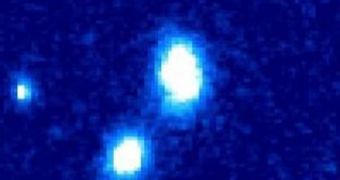Over the course of its years in service, the Hubble has brought forward a new era of astronomic knowledge. Just recently, with the release of the preliminary results of the GOODS NICMOS survey, the largest non-US-led study performed with the famous observatory, experts have learned that the massive galaxies that first appeared after the Big Bang also gave birth to the largest cosmic objects observed thereafter. The results were showcased on Wednesday, April 22nd, at the European Week of Astronomy and Space Science, which took place at the University of Hertfordshire, in the UK.
Hubble plays just a part, albeit important, in the new massive Great Observatories Origins Deep Survey (GOODS) of the Universe. In addition to the optical/near-ultraviolet observatory, the research also includes NASA’s Spitzer and Chandra space telescopes, alongside the European Space Agency's (ESA) XMM Newton X-ray observatory. Their goal is to peer back as deep as possible into the early Universe, and to provide researchers with the most comprehensive view of a time when galaxies were still something new to the world.
“As almost all of these massive galaxies are invisible in the optical wavelengths, this is the first time that most of them have been observed. To assess the level of interaction and mergers between the massive galaxies, we searched for galaxies in pairs, close enough to each other to merge within a given time-scale. While the galaxies are very massive and at first sight may appear fully formed, the results show that they have experienced an average of two significant merging events during their life-times,” University of Nottingham Astronomer Dr. Chris Conselice, who has also been the principal investigator for the survey, explained.
“The findings support a basic prediction of the dominant model of the universe, known as cold dark matter, so they reveal not only how the most massive galaxies are forming, but also that the model that’s been developed to describe the universe, based on the distribution of galaxies that we’ve observed overall, applies in its basic form to galaxy formation,” he said, as quoted by ScienceDaily.
The study revealed the fact that very massive galaxies, roughly ten times the size of our own Milky Way, were involved in at least one merger just two to three billion years after the formation of the Universe. Considering that the reionization epoch concluded one billion years after the Big Bang, astronomers find it fascinating that the first collisions appeared just one more billion years later.

 14 DAY TRIAL //
14 DAY TRIAL //